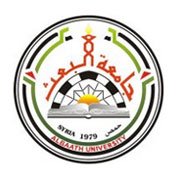Subscribe to the gold package and get unlimited access to Shamra Academy
Register a new userESPnet-ST IWSLT 2021 Offline Speech Translation System
Espnet-St iwslt 2021 نظام ترجمة الكلام غير متصل
648
0 0
0.0
(
0
)
Created by
Shamra Editor
Ask ChatGPT about the research

توضح هذه الورقة تقديم IWSLT-St المجموعة ESPNET-St Group في مسار ترجمة الكلام دون اتصال بالإنترنت. لقد بذلنا هذا العام جهود مختلفة على تدريب البيانات والهندسة المعمارية وتجزئة الصوت. على جانب البيانات، التحقق في تقطير المعرفة على مستوى التسلسل (SEQKD) لترجمة خطاب نهاية إلى نهاية (E2E). على وجه التحديد، استخدمنا SEQKD متعدد المراجع من المعلمين المتعددين المدربين على كميات مختلفة من BiteXT. في جانب الهندسة المعمارية، اعتمكنا من تشفير المطابقة والهندسة المعمارية متعددة اللمعان، والذي يزود بكوادر مخصصة للتعرف على الكلام ومهام الترجمة في نموذج ترميز الترميز الموحد وتمكن البحث في كل من المساحات المصدر والجلد المستهدف أثناء الاستدلال. نحن أيضا تحسين تجزئة الصوت باستخدام مجموعة أدوات Pyannote.Audio ودمج قطاعات قصيرة متعددة للنمذجة ذات السياق الطويل. أظهرت التقييمات التجريبية أن كل منهم ساهم في تحسينات كبيرة في أداء الترجمة. مجتمع أفضل نظام E2E لدينا بجميع التقنيات المذكورة أعلاه مع مجموعة نموذجية وحققت 31.4 بلو في المرجع 2- TST2021 و 21.2 بلو و 19.3 بلو على المراجع الفردية من TST2021.
This paper describes the ESPnet-ST group's IWSLT 2021 submission in the offline speech translation track. This year we made various efforts on training data, architecture, and audio segmentation. On the data side, we investigated sequence-level knowledge distillation (SeqKD) for end-to-end (E2E) speech translation. Specifically, we used multi-referenced SeqKD from multiple teachers trained on different amounts of bitext. On the architecture side, we adopted the Conformer encoder and the Multi-Decoder architecture, which equips dedicated decoders for speech recognition and translation tasks in a unified encoder-decoder model and enables search in both source and target language spaces during inference. We also significantly improved audio segmentation by using the pyannote.audio toolkit and merging multiple short segments for long context modeling. Experimental evaluations showed that each of them contributed to large improvements in translation performance. Our best E2E system combined all the above techniques with model ensembling and achieved 31.4 BLEU on the 2-ref of tst2021 and 21.2 BLEU and 19.3 BLEU on the two single references of tst2021.
References used
https://aclanthology.org/
rate research
Read More
This paper describes the submission of the NiuTrans end-to-end speech translation system for the IWSLT 2021 offline task, which translates from the English audio to German text directly without intermediate transcription. We use the Transformer-based
model architecture and enhance it by Conformer, relative position encoding, and stacked acoustic and textual encoding. To augment the training data, the English transcriptions are translated to German translations. Finally, we employ ensemble decoding to integrate the predictions from several models trained with the different datasets. Combining these techniques, we achieve 33.84 BLEU points on the MuST-C En-De test set, which shows the enormous potential of the end-to-end model.
This paper describes KIT'submission to the IWSLT 2021 Offline Speech Translation Task. We describe a system in both cascaded condition and end-to-end condition. In the cascaded condition, we investigated different end-to-end architectures for the spe
ech recognition module. For the text segmentation module, we trained a small transformer-based model on high-quality monolingual data. For the translation module, our last year's neural machine translation model was reused. In the end-to-end condition, we improved our Speech Relative Transformer architecture to reach or even surpass the result of the cascade system.
In this paper, we describe Zhejiang University's submission to the IWSLT2021 Multilingual Speech Translation Task. This task focuses on speech translation (ST) research across many non-English source languages. Participants can decide whether to work
on constrained systems or unconstrained systems which can using external data. We create both cascaded and end-to-end speech translation constrained systems, using the provided data only. In the cascaded approach, we combine Conformer-based automatic speech recognition (ASR) with the Transformer-based neural machine translation (NMT). Our end-to-end direct speech translation systems use ASR pretrained encoder and multi-task decoders. The submitted systems are ensembled by different cascaded models.
This paper describes Maastricht University's participation in the IWSLT 2021 multilingual speech translation track. The task in this track is to build multilingual speech translation systems in supervised and zero-shot directions. Our primary system
is an end-to-end model that performs both speech transcription and translation. We observe that the joint training for the two tasks is complementary especially when the speech translation data is scarce. On the source and target side, we use data augmentation and pseudo-labels respectively to improve the performance of our systems. We also introduce an ensembling technique that consistently improves the quality of transcriptions and translations. The experiments show that the end-to-end system is competitive with its cascaded counterpart especially in zero-shot conditions.
The paper describes BUT's English to German offline speech translation (ST) systems developed for IWSLT2021. They are based on jointly trained Automatic Speech Recognition-Machine Translation models. Their performances is evaluated on MustC-Common te
st set. In this work, we study their efficiency from the perspective of having a large amount of separate ASR training data and MT training data, and a smaller amount of speech-translation training data. Large amounts of ASR and MT training data are utilized for pre-training the ASR and MT models. Speech-translation data is used to jointly optimize ASR-MT models by defining an end-to-end differentiable path from speech to translations. For this purpose, we use the internal continuous representations from the ASR-decoder as the input to MT module. We show that speech translation can be further improved by training the ASR-decoder jointly with the MT-module using large amount of text-only MT training data. We also show significant improvements by training an ASR module capable of generating punctuated text, rather than leaving the punctuation task to the MT module.
suggested questions
Log in to be able to interact and post comments
comments
Fetching comments


Sign in to be able to follow your search criteria


